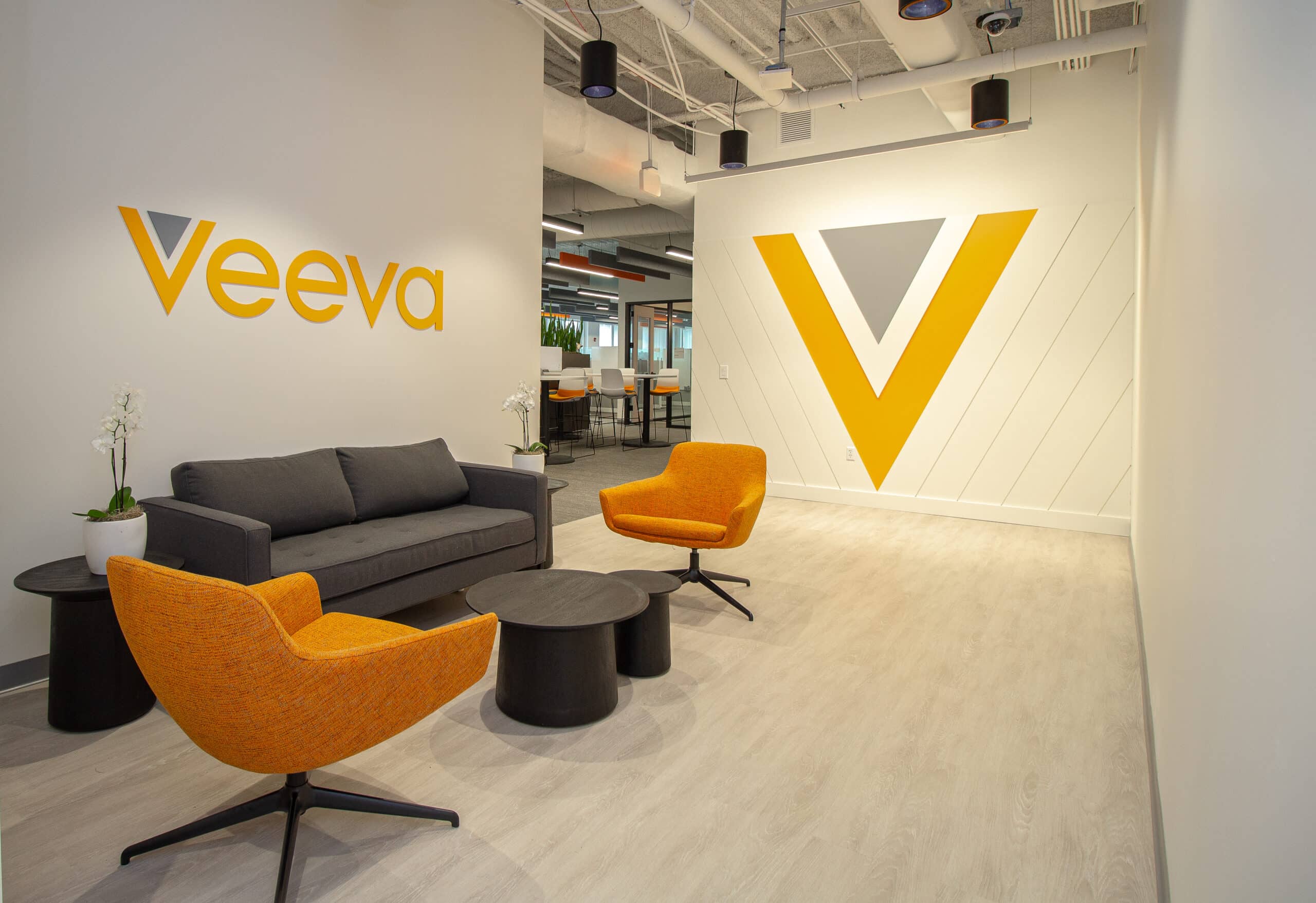According to the Triangle Business Journal, Raleigh and Durham’s office vacancy rate reached 14% in the first quarter of 2023 as landlords and owners struggled to fill spaces that companies had vacated for newer locations. In some cases, companies opted to not renew their leases at all. While office vacancy is still below the area’s historic high of 15%, it’s an upward trend that’s worrying many market experts. Considering the high percentage of empty office spaces in major metropolitan areas around the US, there are valid concerns that the necessity of corporate office space may continue to decrease as hybrid work remains a popular and lucrative way for companies to function. For businesses that choose to retain their offices, enticing employees into the workspace poses even more challenges. More than three years after Covid upended traditional office-centered work schedules, many forms of social life have bounced back to their pre-pandemic levels – offices, however, remain stubbornly quiet. Executives have begun to implement high-end amenities to entice workers back into the office, and even more, have started mandating employee attendance.
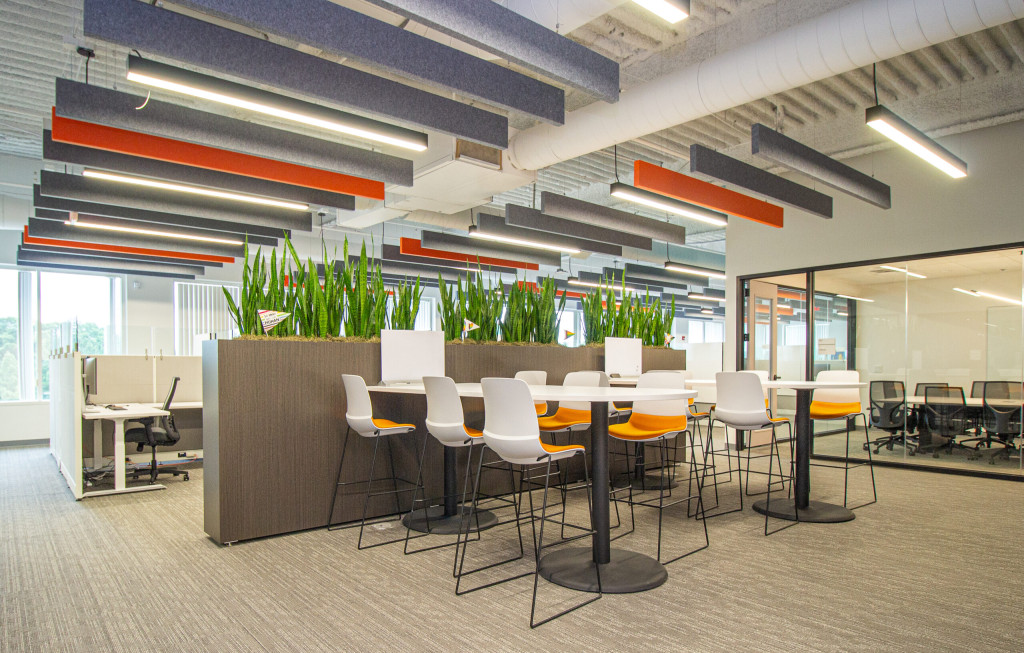
For those choosing to return to the office, a combination of communal and private space gives employees a choice in their preferred work style.
Companies have often discovered that the best way to fill the office is to remind employees of its social promise. It turns out that many people enjoy spending time with their coworkers after experiencing isolated workdays, and in some areas, the lack of employee face-to-face coordination can stall the progression of communal work and projects.
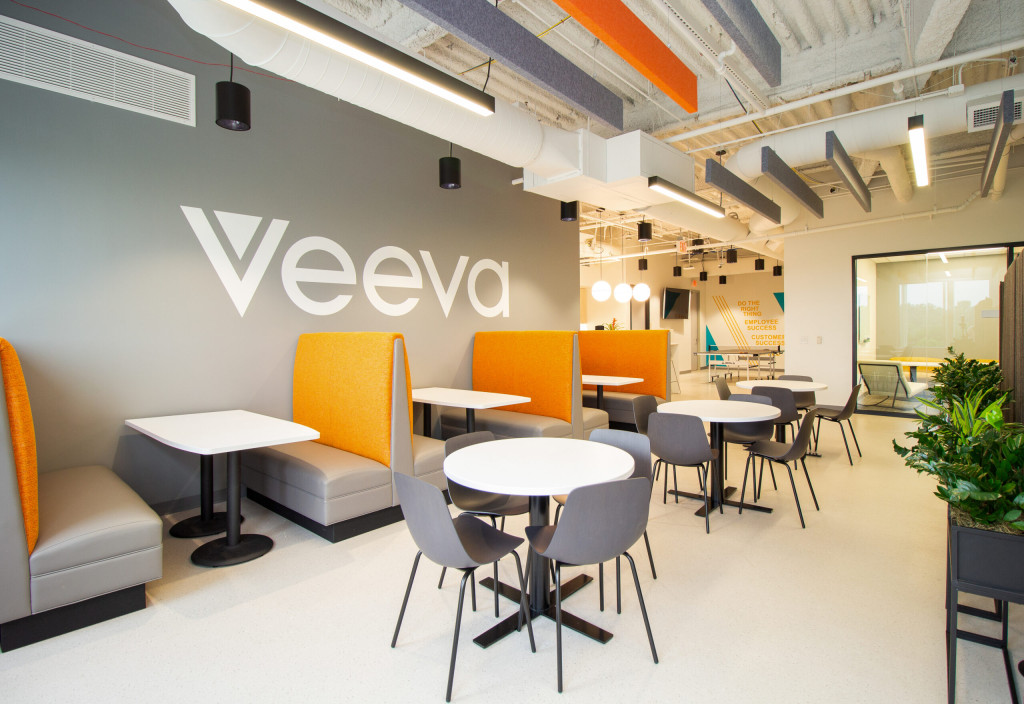
Creating space for sharing meals and socializing face-to-face with coworkers has been prioritized in Veeva’s offices.
Therein lies the challenge of modern hybrid work models for established businesses: How can management teams remind employees of the benefits of in-office work, create spaces where socializing can be utilized, and remain in the black budget-wise? To be successful, improvements need to be strategic. Enter the Design Strategist. At its core, Interior Design Strategy focuses on evaluating each specific scenario to see what works and what doesn’t, developing solutions for businesses that need to reconsider the function of their space based on how their teams are working today. Interior Design Strategy can assist companies in identifying pre-existing spaces that can be updated to better suit employees’ needs while providing a modern face-lift to office interiors. “The goal is to intentionally plan spaces that generate communal work environments that are both beautiful and functional, so employees see the value in being there,” said Lauren Miller, HagerSmith’s Senior Design Strategist. “When you create a unique place where employees can have worthwhile working experiences, you create room for evolution.” When reconsidering office space usage, the value of interviewing or surveying the staff that will use the space cannot be understated. By ascertaining the specific office requirements and preferences of employees, commercial real estate can be truly personalized to fit a company’s work style and needs. If an employee wants to return to the office but now must share a communal working area, they may choose to stay home if they perform better in their own designated space. Maybe there aren’t enough quiet rooms available in the office where they can close the door and focus on a conference call. All these factors can contribute to an employee’s desire to work from home and can be fixed with easy and affordable interior changes.
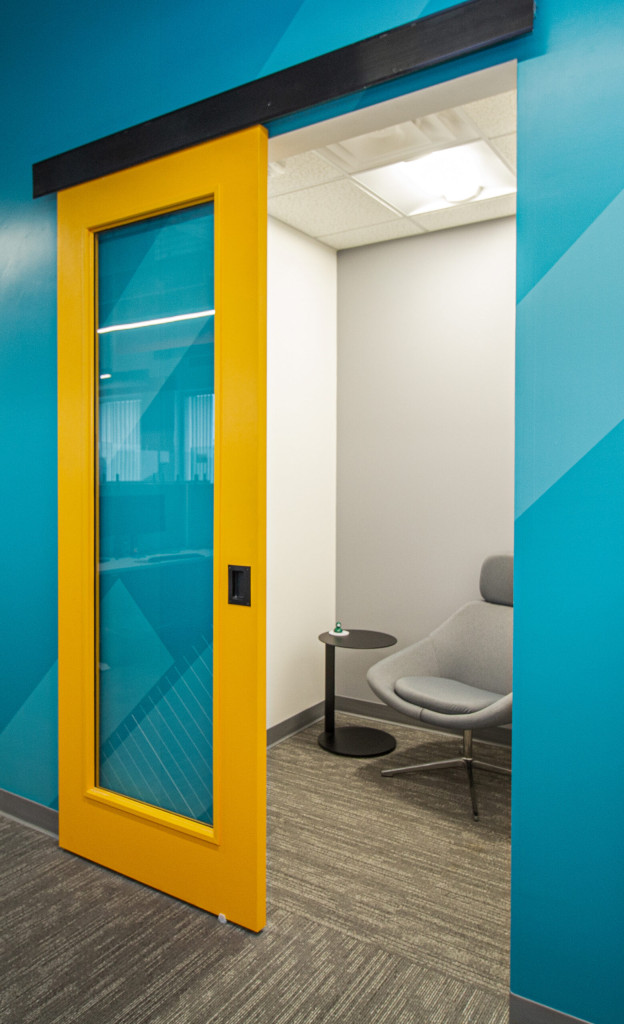
An underused closet can be transformed into a quiet room, where employees can take calls in a private, heads-down space.
Along with refitting existing spaces, an Interior Design Strategist can also advise brokers and business owners on the most sought-after amenities and current market trends. By asking the right questions to properly assess a company’s needs, Interior Design Strategists can observe, evaluate and make recommendations to develop a personalized scope of work that will provide businesses a good return on their investment. While a typical law firm may not want an indoor pickleball court in their office, a small local start-up may be able to draw in younger staff a couple of days a week with a company-wide tournament during the lunch hour.
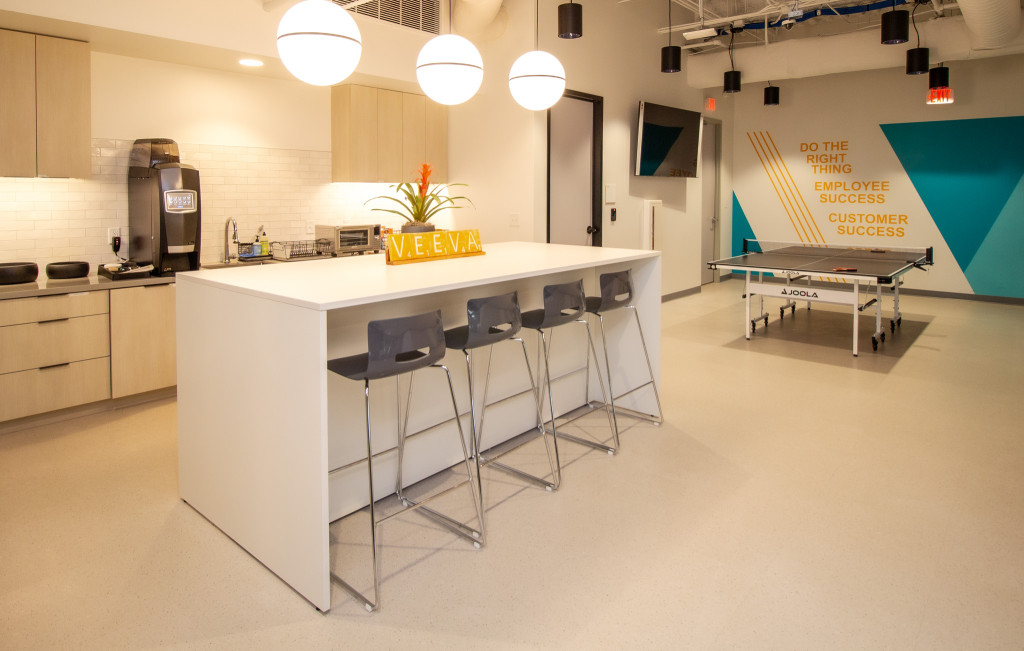
The addition of family-style kitchens makes space for employees to gather for birthdays and baby showers, with the added opportunity of a pick-up game of ping-pong.
“The main line is to increase attraction and retention,” said Miller. “When we focus on being intentional and optimizing intelligent design choices, we can understand the company’s present needs and anticipate future requirements.”
Click for more information on Interior Design Strategy and to contact Lauren Miller.

